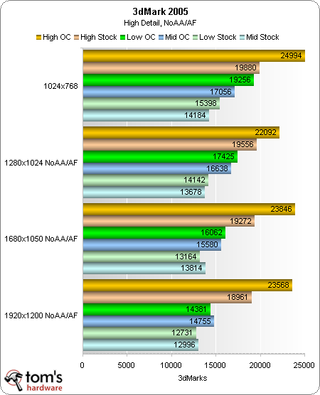SBM 5: Price/Performance
Synthetics

3D Mark 2005 shows extensive reliance on CPU clock speed, putting the faster-graphics mid-cost build behind the faster-CPU low-priced build when tested at low resolutions. At higher resolutions the mid-priced build finally slips into its expected position.


The low-cost system really packs a punch in SPECviewperf, taking out both the high-performance and mid-priced machines even when overclocked.

Low-cost system builder Don Woligroski mentioned an unresolved compatibility issue that has prevented many systems, including his, from completing PC Mark 2005's system test. That failure allows the mid-priced and high-performance configurations to dominate the chart.

The most significant gains in PC Mark 2005's CPU test come not from added cores, but from added clock speed. The added cores do help, but notice how the overclocked low-cost system almost catches up to the high-performance system's baseline measurement.

The mid-priced system falls behind in PC Mark 2005's memory test, most likely because of its slower 1066 MHz CPU FSB. The high-performance system starts out 10% ahead of the low-cost competitor at stock speed, but its margin of victory narrows to only 2% when both are pushed to the limit.

Stay on the Cutting Edge
Join the experts who read Tom's Hardware for the inside track on enthusiast PC tech news — and have for over 25 years. We'll send breaking news and in-depth reviews of CPUs, GPUs, AI, maker hardware and more straight to your inbox.
Most Popular


